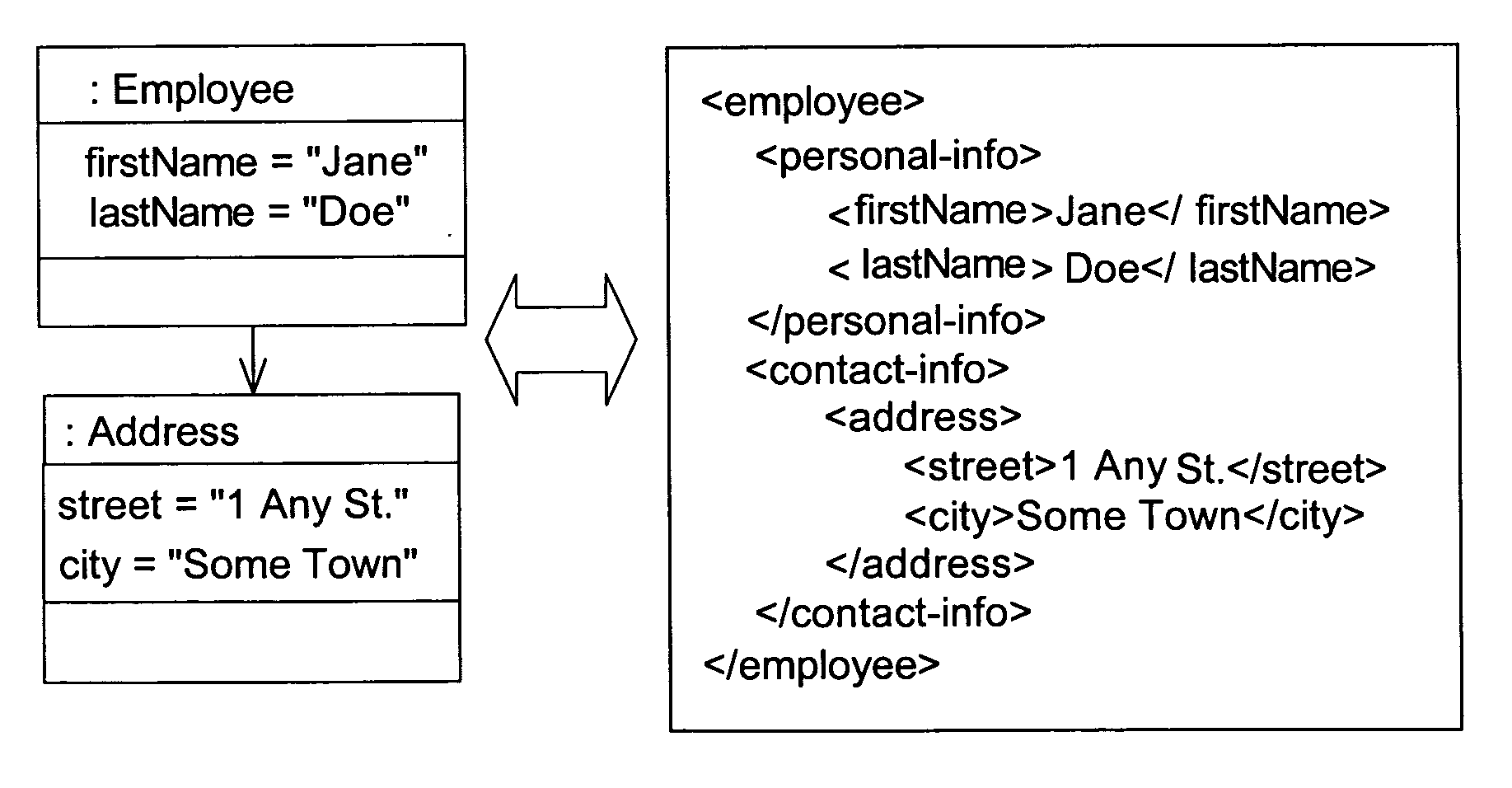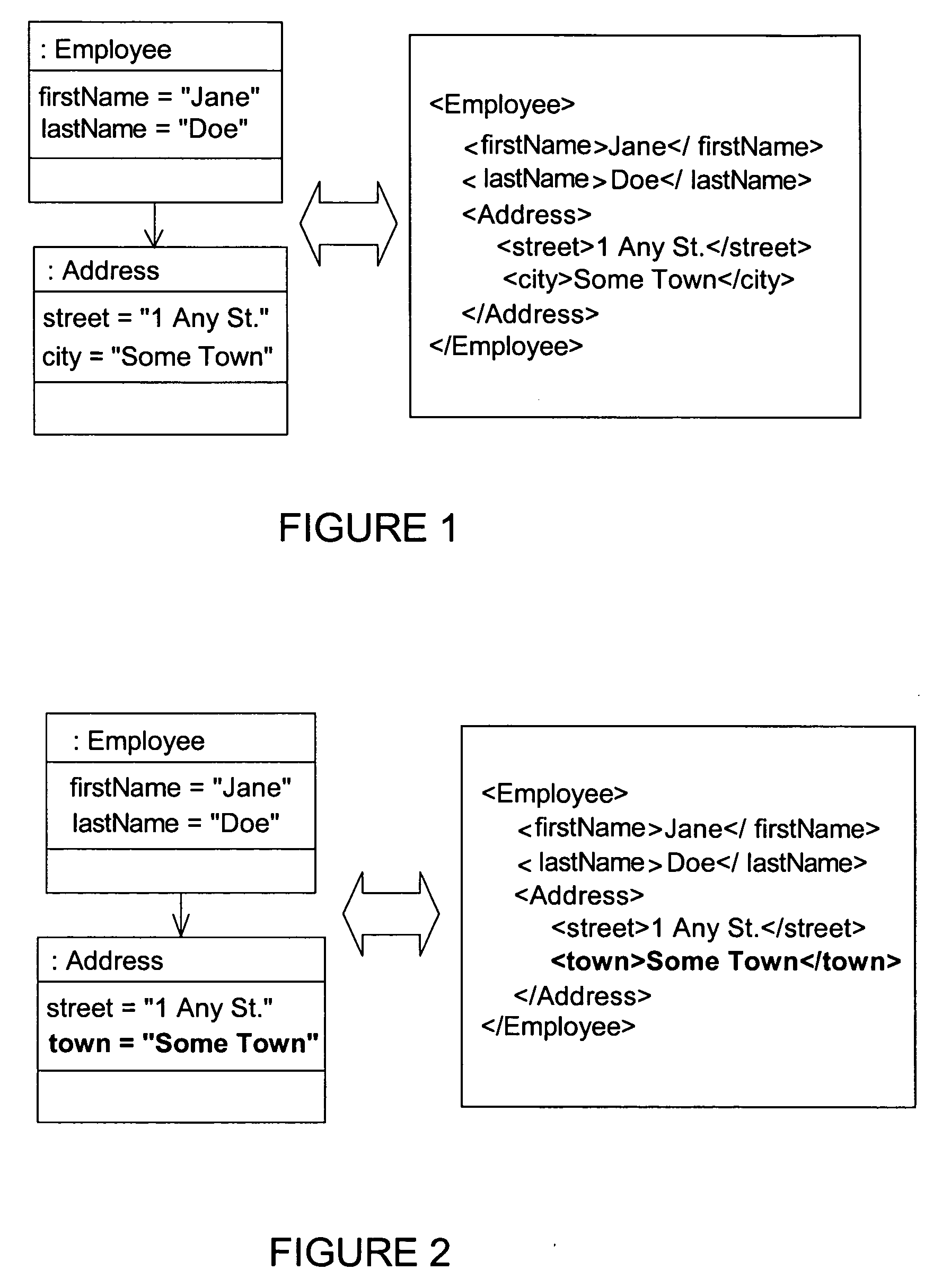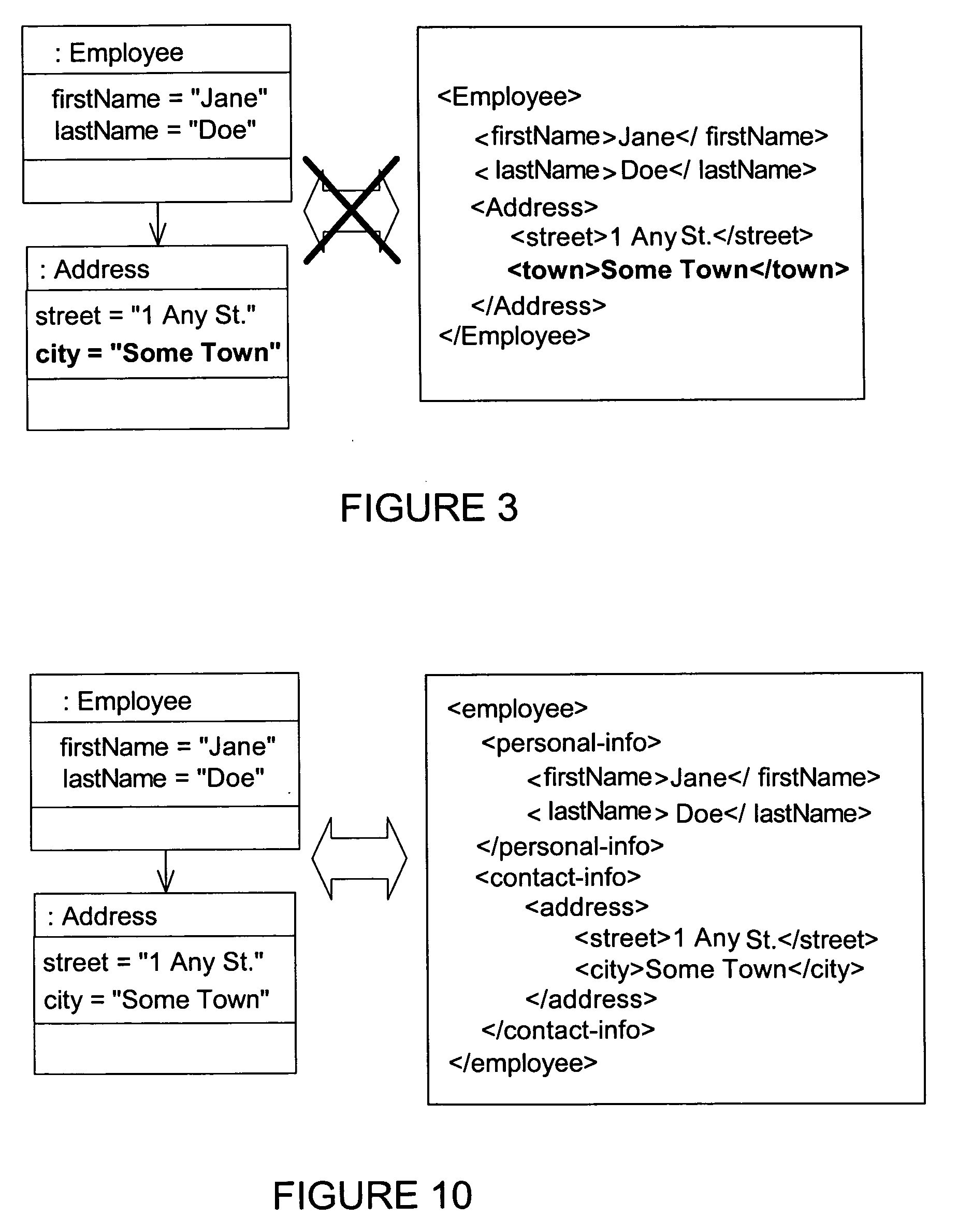Method of and system for providing path based object to XML mapping
a path based object and mapping technology, applied in the field of providing path based objects to xml mapping, can solve the problems of not being able to convert between software objects and xml, not being able to guarantee that an arriving document will conform to a given xml schema, and being difficult to carry around
- Summary
- Abstract
- Description
- Claims
- Application Information
AI Technical Summary
Benefits of technology
Problems solved by technology
Method used
Image
Examples
example 1
General Mapping
[0094] Given a system such as that of FIG. 10 would yield a set of mapping data as shown below. Note that a set of mappings has been generated for each software Object, and that each mapping includes: a mapping type which determines whether the XML element is intended to contain data or define structure, an Object attribute, and an XPath which locates the destination in the XML document. The “address mapping” element is a complex element (i.e. it defines structure rather than data), so it has a “reference descriptor” which directs the program to the “street Mapping” and “city Mapping” data: [0095] firstName Mapping [0096] Mapping Type: direct mapping [0097] Object Attribute: firstName [0098] XPath: personal-info / first-name / text( ) [0099] lastName Mapping [0100] Mapping Type: direct mapping [0101] Object Attribute: lastName [0102] XPath: personal-info / last-name / text( ) [0103] address Mapping [0104] Mapping Type: composite Object mapping [0105] Object Attribute: addres...
example 2
Object to XML Conversion
[0118] When an Object is converted to an XML document, it may be necessary to change the structure of the XML document from what an arbitrary conversion process would generate.
[0119] For example, if one begins with an Object as follows:
: EmployeefirstName = “Jane”lastName = “Doe”
[0120] When the user makes this request using the GUI, the metadata for the two nodes will be represented as follows: [0121] firstName Mapping [0122] Mapping Type: direct mapping [0123] Object Attribute: firstName [0124] XPath: personal-info / first-name / text( ) [0125] lastName Mapping [0126] Mapping Type: direct mapping [0127] Object Attribute: lastName [0128] XPath: personal-info / last-name / text( )
[0129] During the Object to XML process an instance of the employee Object is would be passed to the algorithm of FIG. 9. It will therefore start a new XML document. Based on the Employee descriptor a new document will be started with the root element “employee”:
[0130]
[0131] The routine...
example 3
Simple Values—XML to Object Conversion
[0133] In the example below the “PERSONAL-INFO / NAME” element represents the customer's name.
Jane Doe
Other Object-to-XML technologies require that an Object relationship is required for each level of nesting. In this example a Customer Object would reference a PersonalInfo Object that had a name attribute.
[0134] Mappings are used to relate an attribute in an Object to the corresponding data in an XML document. Mappings require two pieces of information: [0135] The Name of the Object attribute; and [0136] The Location of the XML data, specified as an XPath statement.
[0137] In this case, the mapping data would be:
[0138] Mapping Information: [0139] Name of the Object attribute: name [0140] Location of XML data: PERSONAL-INFO / NAME
[0141] Converting this data from XML to Object format would proceed along the following lines: when an XML document is being converted to Object data, each of the mappings is processed for each of the Obj...
PUM
 Login to View More
Login to View More Abstract
Description
Claims
Application Information
 Login to View More
Login to View More - R&D
- Intellectual Property
- Life Sciences
- Materials
- Tech Scout
- Unparalleled Data Quality
- Higher Quality Content
- 60% Fewer Hallucinations
Browse by: Latest US Patents, China's latest patents, Technical Efficacy Thesaurus, Application Domain, Technology Topic, Popular Technical Reports.
© 2025 PatSnap. All rights reserved.Legal|Privacy policy|Modern Slavery Act Transparency Statement|Sitemap|About US| Contact US: help@patsnap.com



